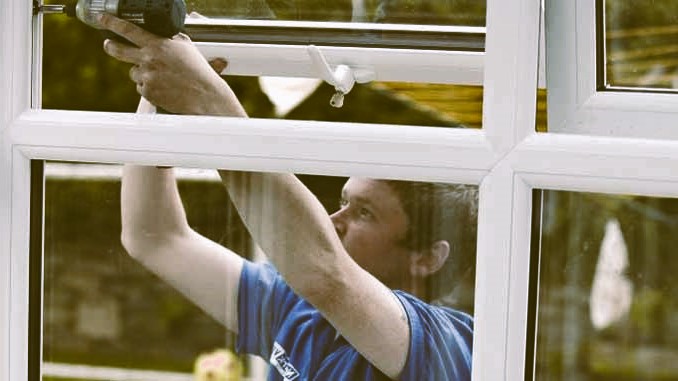Indoor air quality is a critical aspect of creating a healthy and comfortable living environment. Poor air quality can have adverse effects on our health, leading to respiratory problems and allergies. One effective way to improve indoor air quality is by integrating ventilation systems with PVC windows. In this article, we will explore the importance of ventilation systems in conjunction with PVC windows and how they contribute to enhancing indoor air quality.
1. Introduction to Indoor Air Quality:
Indoor air quality refers to the level of air cleanliness within enclosed spaces, such as homes, offices, and buildings. Factors that affect indoor air quality include pollutants, humidity levels, and adequate ventilation. Poor indoor air quality can result in health issues, including respiratory irritation, allergies, and even long-term health complications. Therefore, it is crucial to maintain good air quality to safeguard the well-being of occupants.

2. The Role of Ventilation Systems:
Ventilation systems play a vital role in maintaining proper air circulation and exchanging indoor air with fresh outdoor air. They help remove pollutants, odors, and excess moisture from indoor spaces, ensuring a healthier and more comfortable environment. Ventilation systems can be categorized into two main types: natural ventilation and mechanical ventilation.
3. Natural Ventilation:
Natural ventilation relies on the use of windows, doors, and vents to facilitate air movement. It takes advantage of natural forces such as wind and temperature differences to allow fresh air to enter the building and expel stale air. PVC windows, with their excellent insulation properties, can be designed to include operable sections that allow for natural ventilation. Opening windows strategically and creating airflow pathways can help optimize natural ventilation and enhance indoor air quality.
4. Mechanical Ventilation:
Mechanical ventilation involves the use of mechanical devices, such as fans and ventilation systems, to circulate and exchange indoor air. These systems are designed to provide a controlled and consistent airflow throughout the building. Mechanical ventilation can be further divided into different types, including exhaust ventilation, supply ventilation, and balanced ventilation systems. When combined with PVC windows, mechanical ventilation systems can effectively remove indoor pollutants and maintain a steady supply of fresh air. Maximizing Natural Light: Designing Homes with Large PVC Windows.
5. The Benefits of PVC Windows for Ventilation:
PVC windows offer several advantages when it comes to ventilation and indoor air quality. Firstly, they can be designed with operable sections, such as casement or awning windows, that allow for increased airflow and natural ventilation. These windows can be strategically positioned to promote cross-ventilation, facilitating the exchange of indoor and outdoor air.
Secondly, PVC windows provide excellent insulation, helping to reduce energy loss and minimize drafts. This is particularly beneficial when using mechanical ventilation systems, as it ensures that the conditioned air remains inside the building, preventing energy wastage.
Moreover, PVC windows are known for their durability and low maintenance requirements. They are resistant to moisture and do not warp or rot, ensuring long-term performance and preventing air leaks that could compromise indoor air quality. Their tight seals and efficient locking mechanisms further contribute to reducing the infiltration of outdoor pollutants.
6. Considerations for Effective Ventilation:

When integrating ventilation systems with PVC windows, there are a few considerations to keep in mind. Proper sizing and placement of ventilation openings, both in the windows and throughout the building, are crucial for optimizing airflow and maintaining a balanced exchange of indoor and outdoor air. It is also essential to adhere to building codes and regulations regarding ventilation requirements to ensure compliance and safety.
Regular maintenance of both the ventilation system and PVC windows is necessary to ensure their proper functioning. Filters should be cleaned or replaced regularly in mechanical ventilation systems, and windows should be kept clean and free from obstructions to maintain optimal airflow.
7. Conclusion:
Improving indoor air quality is essential for creating a healthy and comfortable living environment. By integrating ventilation systems with PVC windows, homeowners can enhance airflow, remove pollutants, and maintain fresh and clean indoor air. Whether through natural ventilation facilitated by operable PVC windows or mechanical ventilation systems combined with the insulation properties of PVC windows, the synergy between ventilation and PVC windows can significantly contribute to improving indoor air quality. Consider implementing these strategies to create a healthier and more pleasant living space for you and your loved ones.
